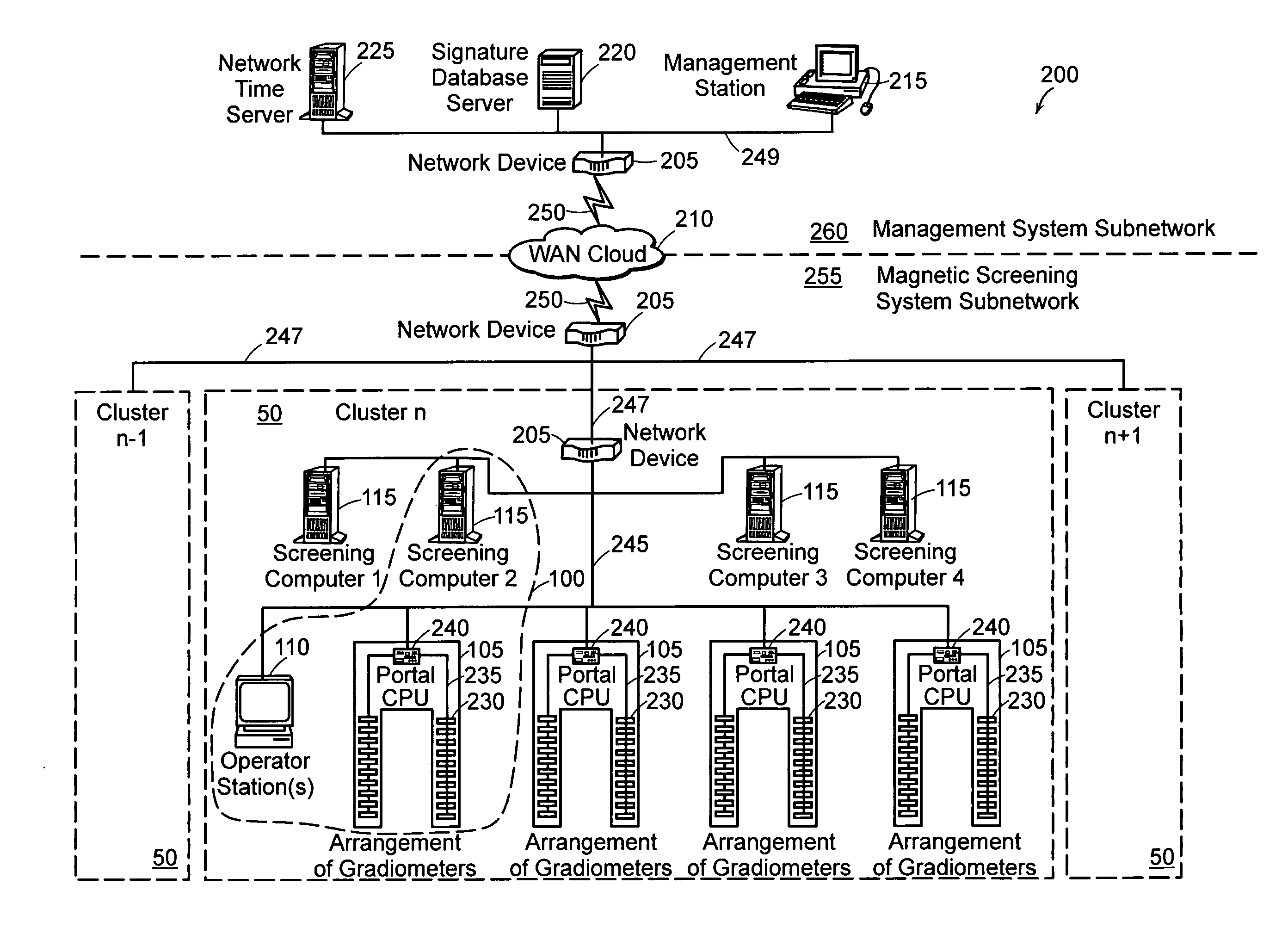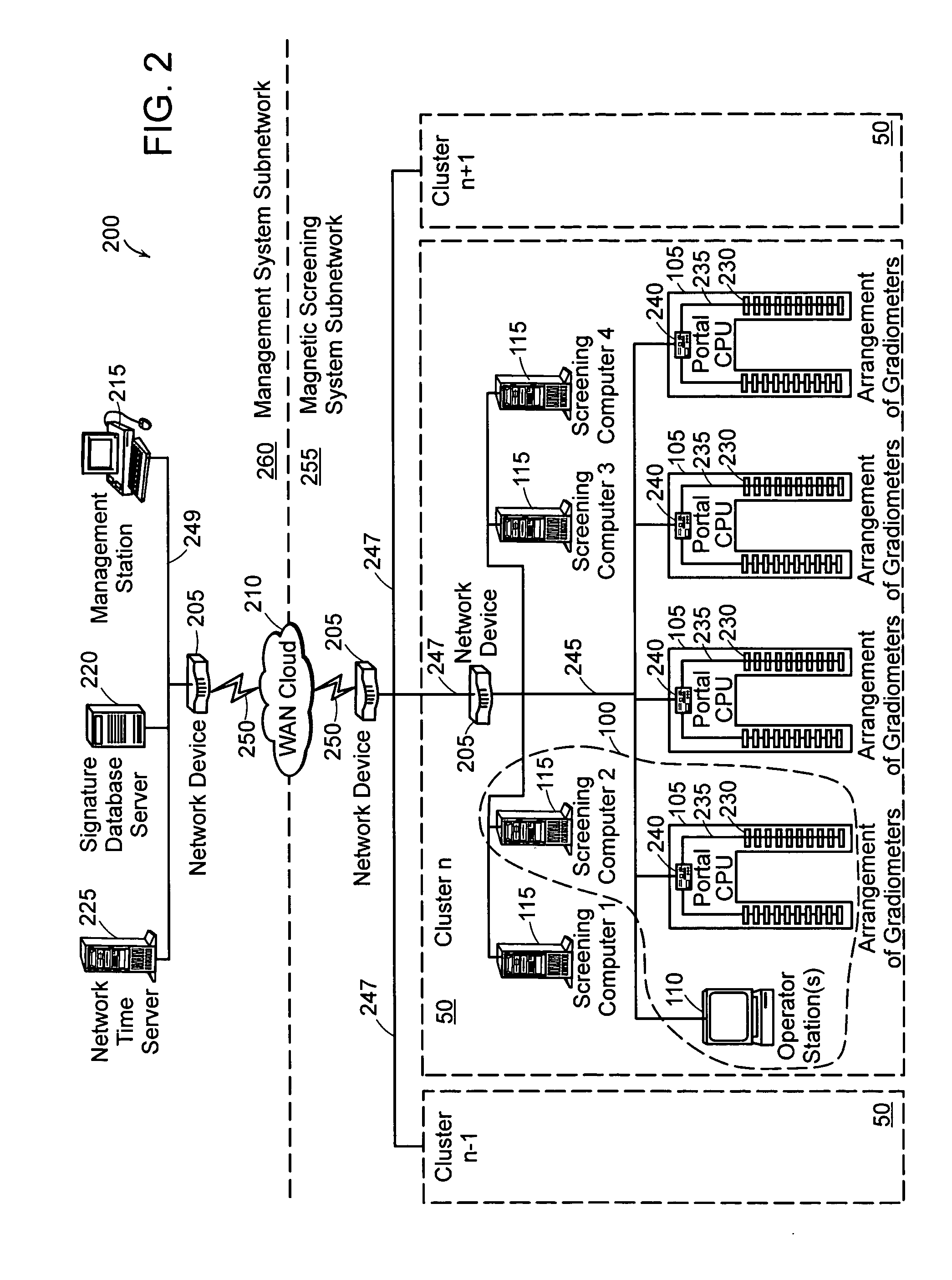Magnetic screening system
a screening system and magnetic technology, applied in the direction of magnetic property measurement, material magnetic variables, instruments, etc., can solve the problems of low passthrough rate, low detection efficiency, and low passthrough rate of one to two hundred persons per hour, so as to increase the automation of detection, identification or classification processes and increase the processing rate of peopl
- Summary
- Abstract
- Description
- Claims
- Application Information
AI Technical Summary
Benefits of technology
Problems solved by technology
Method used
Image
Examples
Embodiment Construction
[0043] A description of preferred embodiments of the invention follows.
[0044] The principles of the present invention may be employed at multiple levels in the magnetic screening system 100 and a network of magnetic screening systems 100 each including multiple gradiometers. The multiple levels include at least a network level, system level, mode of operation level, and gradiometer design level. A brief overview of each is presented, and details of each, in turn, follows the brief overview.
[0045]FIG. 1 is a pictorial diagram of a cluster 50 of magnetic screening systems 100, each using gradiometers configured in a portal 105. Magnetic screening systems 100 are typically used at an entrance to a public place, such as an airport, government building, public school, or amusement park. The magnetic screening systems 100 are used to ensure safety for the public. The magnetic screening systems can identify magnetic objects, referred to herein as “target objects” on a person, as understo...
PUM
 Login to View More
Login to View More Abstract
Description
Claims
Application Information
 Login to View More
Login to View More - R&D
- Intellectual Property
- Life Sciences
- Materials
- Tech Scout
- Unparalleled Data Quality
- Higher Quality Content
- 60% Fewer Hallucinations
Browse by: Latest US Patents, China's latest patents, Technical Efficacy Thesaurus, Application Domain, Technology Topic, Popular Technical Reports.
© 2025 PatSnap. All rights reserved.Legal|Privacy policy|Modern Slavery Act Transparency Statement|Sitemap|About US| Contact US: help@patsnap.com



